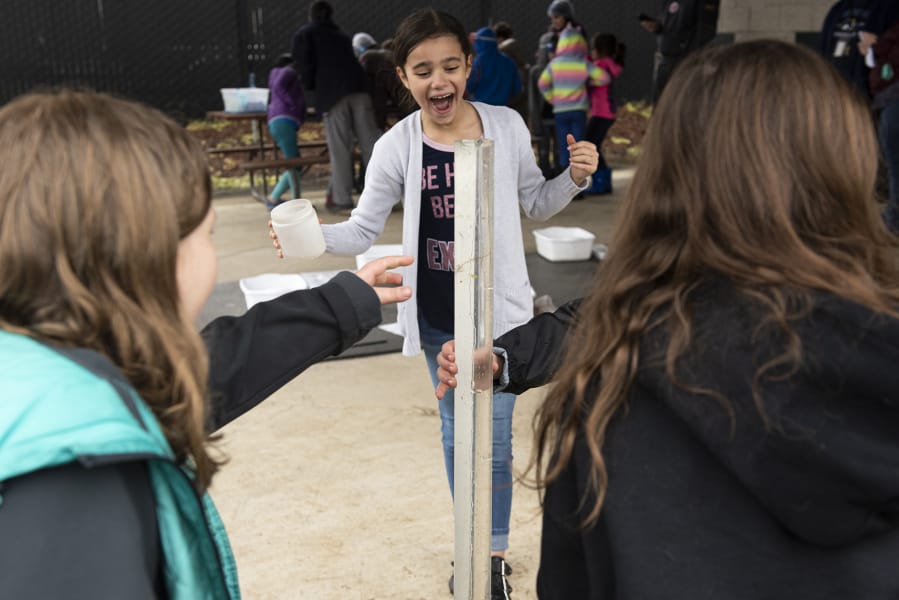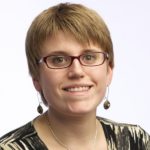Eight-year-old Micaiah Ackler squealed Friday as she pulled what appeared to be the discarded exoskeleton of a creepy-crawly from a bucket of pond water.
“I found a weird skin thing!” the Maple Grove Primary School third-grader said.
Micaiah and her peers in Pat Harmon’s third-grade class may be a bit younger than the average scientist, but they’re doing science nonetheless. These young learners are among 3,000 students enrolled in the Student Watershed Monitoring Network, a program through Clark County’s Clean Water Division and the city of Vancouver’s Water Resources Education Center.
Over the course of the school year, students measure water quality and habitat in local bodies of water. The data they collect is uploaded into a database for professionals to review and identify potential problems.
This year’s collection, like so many other things, will be derailed by the new coronavirus. Students typically present their findings at a Watershed Congress at the Vancouver Water Resources Education Center in May, but school closures due to COVID-19 have thrown that into question.
But students nonetheless enjoyed another hour on Friday counting bugs, measuring water temperature and identifying pollutants from the pond behind Maple Grove’s campus.
“For me, it’s impactful for them to do something environmentally focused,” said Maria Tunno, a watershed educator with the city and county. “I want them to think of it as a career option.”
Harmon’s background is in natural science, so she jumped at the opportunity earlier this year to enroll in the Student Watershed Monitoring Network.
“They’re real scientists,” Harmon said. “They use what they learn to come up with theories about their area.”
Micaiah and her classmate Colette Clement, 8, peered into a bucket filled with pond water, delicately spooning insects into a nearby ice cube tray for further identification. Harmon pointed out that some species, like blackfly larvae, are tolerant of different pollutants, while insets like caddisflies or stoneflies prefer a cleaner body of water.
“We’re learning the things that make the water good and water bad,” Micaiah said.
Does either girl see herself in science someday?
Maybe, Colette said. For now, she just likes “looking at all the cool bugs.”




